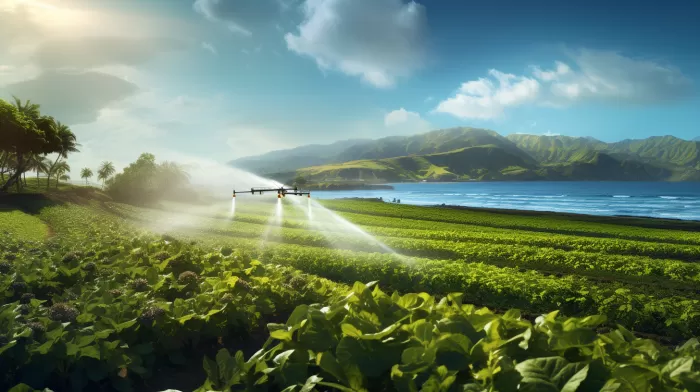The county council on the Hawaiian island of Kauai made a groundbreaking decision when they passed a bill that limits the spraying of pesticides by companies who grow GMO crops on the island. This move has not been popular with biochemical corporations like Monsanto, who use the island for developing new GMO crops. Companies such as Dow, Monsanto, DuPont Pioneer, BASF, and Syngenta have been using the island for GMO experiments mainly due to the ideal climate offering an opportunity for three corn harvests annually.
New Laws for Pesticide Spraying
The monumental law enforces the grounding of GMO companies by forcing them to reveal information about the pesticides they have been spraying on their fields. Additionally, the law mandates the creation of pesticide-free areas adjacent to public facilities such as hospitals, roads, waterways, and schools, thereby preventing any possible harm to the people and environment caused by pesticides.
The New York Times cited a statement by DuPont Pioneer expressing corporate discontent with the new rules. They deemed the bill to focus solely on a few seed companies while neglecting the vast number of other industries on the island that also use the same products for pest management. They have also raised concerns about the legal defensibility of the bill and are currently evaluating all of their business and legal options.
Mark Phillipson, representing the Hawaii Crop Improvement Association, told PBS that the main reason they chose Hawaii is the excellent year-round weather, which allows them to work for 365 days, achieving three crops a year. As a comparison, conducting research or production on the mainland might result in just one crop per year. Something that might take 10 to 12 years to develop on the mainland can be achieved in just three to four years on the Hawaiian island of Kauai.
Conflict of Interests
However, many Hawaiians are not pleased with their home being ground zero for GMO development. And rightly so, as the potential hazards that GMO and pesticide usage present can have long-lasting effects on public health and the environment.
According to the Non-GMO Project, genetically modified organisms (GMOs) are organisms wherein the genetic material (DNA) has been altered in a way that does not occur naturally through mating or natural recombination. The technology is often called “modern biotechnology,” “gene technology,” or “genetic engineering.”
These GMOs present the risk of introducing new allergens and toxins, in addition to antibiotic resistance and a loss of nutrition in food. Despite claims that GMOs have potential benefits, such as pest and disease resistance, these organisms can also lead to unexpected consequences. In fact, they are even banned or significantly restricted in over 60 countries due to their harmful effects on public health and nature. Some examples of these include Austria, France, Germany, Italy, Luxembourg, Norway, Poland, and Switzerland.
Furthermore, the use of synthetic pesticides in large amounts has also long been debated due to their harmful environmental impacts. National Geographic states that while pesticides are designed to control pests and reduce infestations, they can also have dire consequences on the environment and human health. The harmful effects of pesticides can range from mild to severe, including skin irritation, neurodevelopmental disorders, damage to the nervous system, or even cancer.
A Step Towards Global Awareness
With the Hawaiian island of Kauai leading the way in implementing such groundbreaking laws, it’s likely that a global movement could gain momentum. Governments around the world are slowly becoming more aware of the dangers presented by GMOs and associated pesticide usage.
The need for better regulations and enforcing stricter laws are becoming increasingly evident, especially when it comes to prioritizing public health and preserving our environment. As we face a critical junction in the battle between corporate greed and preserving human health and the environment, it’s crucial to recognize the significant steps being taken by local governments, such as the Hawaiian island of Kauai.



